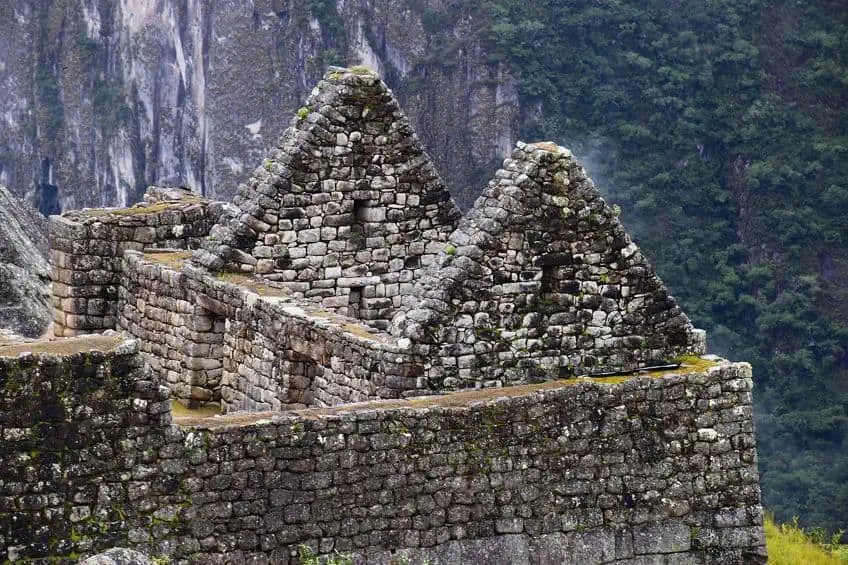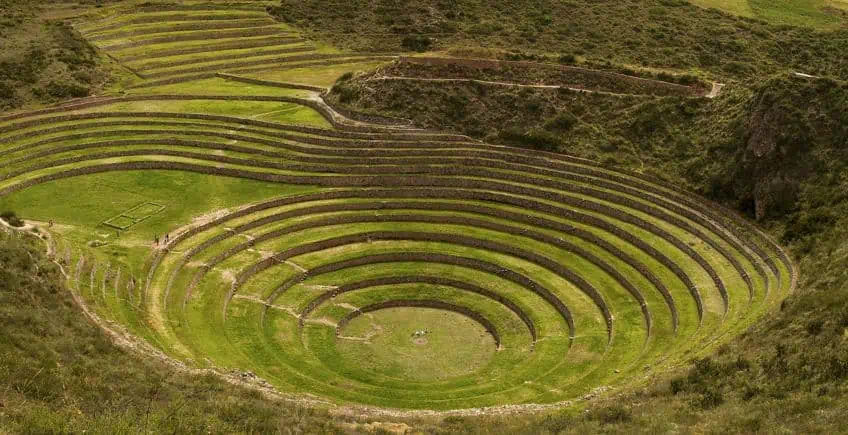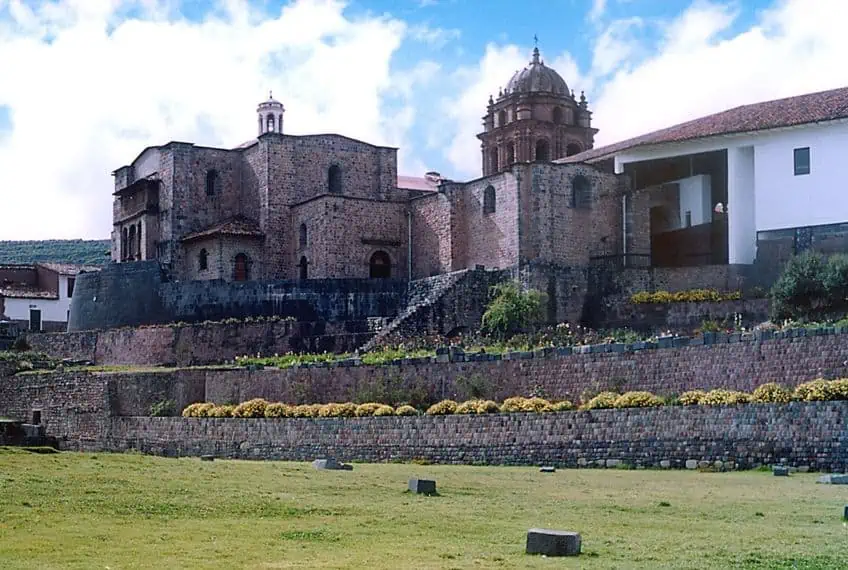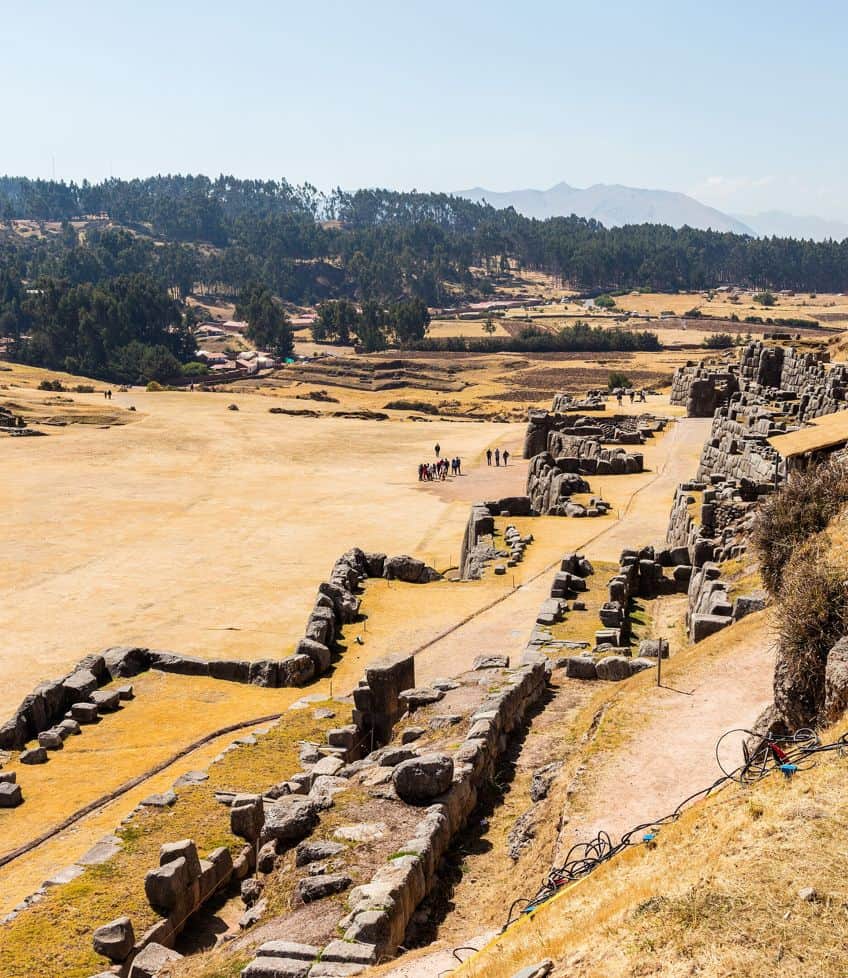Inca Architecture – The Ancient Style of Inca Structures
Inca architecture blossomed during the Inca Empire and was particularly well known for its exemplary stonework style that has often managed to stay standing till today. Due to this, there are many architectural wonders produced by this civilization. But, what was unique about Inca architecture? Keep reading to learn a lot more about Inca architecture and various Inca structures.
A Look at Inca Architecture
Inca architecture is the most important form of architecture in the pre-Columbian era in South America. This architectural style did not come entirely from the Incas and was instead inherited from Tiwanaku. However, this did not stop the Incas from developing it far beyond anything that had come before. This civilization made extensive use of local materials and the topography of the land when it designed structures, and the capital of the Empire, Cusco, still exists to this day. So, let’s have a look at the history, characteristics, and examples of Inca architecture.

A Brief History of the Inca Empire
The Inca people started their existence as a pastoral people around the Cusco area, but in 1438, the leader of the Incas, Pachacuti, started a campaign of conquest. He began the Inca Empire as it would soon become, and his son started many of the later conquests that would lead to expansion. This empire expanded between 1438 and 1533 through both conquest and more peaceful methods. They created one of the greatest empires the world had ever seen, and they did so without a written language, money, markets, iron, steel, or the wheel. However, the development of this new civilization was not meant to last.
In 1533, the Spanish conquistadors started their true assault on the Inca Empire during a succession dispute between two sons in the Empire.
The Spanish invaders were far more adept at battle, and they had technological advantages, such as their armor being impenetrable to Inca weaponry. The Inca Empire may have been the largest in the region, but once it went up against the imperial forces of Spain, it was not able to survive. The Inca Empire came to an end and was assimilated under the colonial rule of the new Spanish invaders. However, Inca architecture would remain and live on far longer than the civilization that had created it.
Characteristics of Inca Architecture
The Inca Empire is primarily known for a specific type of masonry known as ashlar masonry. This is a form of stonework in which stones are cut to precise proportions and then polished so that they will fit together so perfectly that there is no need for mortar. It is known as a form of dry masonry, and Inca architecture is particularly well-known for its widespread adoption of this highly intricate method. However, Inca architecture did not only make use of this style. There were also mortar-based structures but Inca architecture is often characterized by an adherence to local needs. Inca buildings were generally constructed using whichever materials were closest, and so there is the prevalent use of local stone.

Most Inca structures made use of a purely rectangular design without internal walls. They often had wooden beams and thatched roofs, but there were some variations of this too. There was also the use of some ornamentation, but not to any significant degree, most of this kind of ornamentation involved animal designs and geometric patterns. Architecture in general was one of the most important aspects of Inca life as all males between the ages of 15 and 50 were expected to work on public construction projects that had been determined by the ruling class.
These structures required massive amounts of manpower, and so this was a good method to ensure that construction received the attention it needed.
Examples of Inca Structures
We will consider several examples of Inca architecture below. There will be instances of Inca temples, the location of Inca houses, and other Inca buildings in general. These structures all generally made use of the Inca stonework methods of ashlar design that have become synonymous with this civilization. So, what did the Incas build? Let’s find out!

Moray (12th -14th Centuries) near Cusco
| Date Constructed | 12th – 14th centuries |
| Function | Possibly farming |
| Location | Near Cusco, Peru |
Moray is an Inca archaeological site that is located about 50 km away from Cusco, and it is placed high up above practically everything else on a 3,500 m (or 11,500 ft) tall plateau. This location contains many Inca ruins, but the most famous of them all is a series of terraced circular holes in the ground. They are all of varying sizes, but the largest of them is about 30 m (or 98 ft) deep. We do not know the exact purpose of this particular piece of Inca architecture, but we do know that there is a significant temperature difference within these different-sized depressions in the ground. The inclusion of an advanced irrigation system also indicates that this structure, which also involves Inca stonework to create these large holes, may have been used for agricultural purposes of some kind.
This is the generally accepted purpose of this particular structure, and through soil analysis, it has been determined that there are various types of soil within this site.
This further indicates that there were different types of soil used for different agricultural needs. The overall design may have even produced a similar effect to modern greenhouses. So, this may indicate a far more technical understanding of agriculture than we’d previously expected for a civilization of this age. Sadly, there was a particularly heavy rainy season in 2009-2010, and these Inca structures actually sustained permanent damage. The excessive levels of rainwater caused some of the ground beneath the structure to erode, and this eventually led to the eastern side of the largest circular structure collapsing. There have since been reconstruction efforts to attempt to stabilize the site because the forces of nature do not remain calm simply because a site holds historical, archaeological, and cultural significance to a bunch of humans.

Coricancha (Around 1200 CE) in Cusco
| Date Constructed | Around 1200 CE |
| Function | Temple |
| Location | Cusco, Peru |
Coricancha, which translates to “The Golden Temple,” is the most important temple that was situated in the Inca Empire. It was located in the capital city of the empire, Cusco in Peru. It was originally named Intikancha or Intiwasi because it was dedicated to the Inca god Inti, the ancient Inca god of the sun, and one of the most important deities in the entire empire throughout its existence. This Inca building was an immensely important structure, but during the conflict between the Inca civilization and the Spanish conquistadors, the Incas were not able to keep a hold of it. The capital of Cusco was taken by 1533. The Inca people were incapable of fighting against the superior methods and technologies of the Spanish invaders.
This meant that the once grand temple soon fell under the rule of a colonial force, and those colonizers did not have the same respect for this temple to Inti that the Incas had.
The intricate Inca stonework that has become so synonymous with so much Inca architecture, especially with grand structures like Inca temples, would lead to the ruin of this temple. The new settlers started to take the temple apart. They did so to build their own structures because taking from existing buildings is a lot easier than mining them again. In fact, much of this ancient temple would form the foundation for a 17th-century convent, the Santo Domingo Convent. The initial temple, when it still stood, was constructed using the kind of ashlar masonry that the Incas were known for. This Inca stonework method was incredibly precise and because of its difficult, non-mortar-based design, it was a difficult method to utilize. This meant that it was used to show how important the structures that used it were, and a grand temple to Inti could certainly qualify for such immense effort.

Machu Picchu (Around 1450 CE) in Eastern Cordillera
| Date Constructed | Around 1450 CE |
| Function | Citadel |
| Location | Eastern Cordillera, Peru |
Machu Picchu is, by far, the most famous Inca structure in the world. It was a 15th-century Inca citadel that was constructed high in the mountains at a height of 2,430 m (or 7,970 ft). It has become one of the most famous pieces of Inca architecture and it was also only rediscovered in 1911. This has often led it to be called the “Lost City of the Incas,” and it has become an immensely recognizable site to anyone at all familiar with the Inca civilization. The entire site makes use of the famous Inca stonework method that used dry-stone walls that used no mortar; the stones simply fit together so precisely that they did not fall apart. There are several Inca buildings in Machu Picchu, and while the exact purpose of these structures is not known, we do know that it was constructed as the estate of the Inca emperor Pachacuti.
However, despite the entire site being constructed by about 1450, it was entirely abandoned a hundred years later for fear of a Spanish discovery of the important citadel.
It was an immensely intricate system for a civilization with no written language, and it may have been built on fault lines to create better drainage and to more easily gain access to fractured rocks for additional construction. However, we cannot know any of this for certain, or the purpose of any of the structures inside Machu Picchu, because we have no access to written records. There were no written records, after all. The site may have been constructed in the traditional ashlar style, but we only really know that the site was important. That’s all. We know that there was an Inca temple there, known as the Temple of the Sun. In addition to the Inca temple, there were also some other structures, such as the Room of the Three Windows and the Intihuatana. However, their exact purpose will likely remain unknown, but that has not stopped restoration efforts. These efforts are still ongoing to this day.

Sacsayhuamán (15th Century) in Cusco
| Date Constructed | 15th century |
| Function | Citadel |
| Location | Cusco, Peru |
Sacsayhuamán, which is also variably spelled as Xacxaguaman or Saqsaywaman is an Inca citadel that is located on the outskirts of Cusco. Much like many of the greatest pieces of Inca architecture, this site is built atop a mountainous region, and it is situated at an altitude of 3,701 m (or 12,142 ft). Sacsayhuamán was, like many of the grandest structures in the Inca Empire, an example of the exemplary Inca stonework style that the society has become so famous for adopting. It was built in the 15th century under Emperor Pachacuti and later by his successors. This piece of Inca architecture was intended to hold thousands of people for a variety of ceremonial activities that were generally ritualistic in nature.
It was a fortified Inca building that gave a good view of the valley beside it, and there have even been indications, based on the discovery of pottery, that the site may have been occupied as early as 900 CE. This would indicate that the site was already important before Sacsayhuamán was built in this location.
Sadly, despite the fortified nature of the site, it did not survive the Spanish conquest of the Inca Empire. Once the Spanish had taken control of Cusco, they used this site as a source of stones. They pulled the stones from the Inca structures to construct Spanish Cusco. It only took a few years for the entire site to be practically destroyed. There are only the largest stones remaining, and they only remain because they were not particularly easy to pull from the stonework because of their immense size. There are some positives though as the location is now used during an annual Inca festival for the winter solstice and new year called Inti Raymi. It happens to this day, and Sacsayhuamán is used to house it. There is also the fact that exercise activities are a common sight at this ancient site as it does offer a beautiful view of the surrounding landscape from its perched position high above the rest of the world.

Ollantaytambo (Mid-15th Century) near Cusco
| Date Constructed | Mid-15th century |
| Function | Town |
| Location | Near Cusco, Peru |
Ollantaytambo is a town, but also an archaeological site about 72 km outside of Cusco. It is, like many instances of Inca architecture, built high at a high altitude. It was constructed at 2,792 m (or 9,160 ft) and during the height of its power, it was used as the royal estate of Emperor Pachacuti after he conquered the area. This emperor conquered the town that once stood here and soon turned it into his personal estate. Once this had come to pass, this estate was extensively rebuilt with new terracing and irrigation methods. The whole area would soon become part of the nobility’s residences, and after Pachacuti’s death, it was administrated by his family.

Once the war against the Spanish had begun, this town was used as a temporary capital for some of the Inca resistance who were fighting against the European conquerors. However, despite its strategic location, it was not able to maintain the resistance for long, and the Inca Empire as a whole fell to the Spanish. These Inca houses for the nobles would eventually go on to become a major tourist attraction in the country. It is also an important location for those who are traveling towards the start location for the famous Inca Trail hike that has become so popular for visitors to the country. The region may have fallen long ago, but at least it has new life in the modern day.
We now come to the end of our discussion of Inca architecture. We have looked at some of the characteristics of this form, especially the Inca stonework that was so prevalent in this ancient empire. We also looked at some Inca houses, temples, and other structures along the way. So, hopefully, you learned a few things from this article, and we can only end this by wishing you a good day/week/month ahead!
Frequently Asked Questions
When Did the Inca Empire Exist?
The Inca Empire was effectively formed in 1438 and it would develop extensively over the course of its relatively short history. Sadly, this civilization would fall to the Spanish just over a century after the arrival of these European invaders in 1533. By 1572, the last of the Incas had given up and they had been entirely conquered.
What Was Unique About Inca Architecture?
Inca architecture specifically made use of a type of special stonework known as ashlar stonework. They are not the only culture to have used this method, but it has become synonymous with the Inca Empire. It is the use of a mortarless style of construction in which stones are precisely cut and placed without the need for any kind of cement or concrete to hold them in place. Instead, the structure remains standing because of the preciseness of the construction.
What Did the Incas Build?
The Incas built a wide array of structures throughout their existence, but temples, citadels, and intricate farming structures were some of the most famous things that this civilization built. A famous aspect of Inca architecture often involved the height at which structures were built. They had magnificent views of the surrounding area and were perched high above everything else around them.
Justin van Huyssteen is a writer, academic, and educator from Cape Town, South Africa. He holds a master’s degree in Theory of Literature. His primary focus in this field is the analysis of artistic objects through a number of theoretical lenses. His predominant theoretical areas of interest include narratology and critical theory in general, with a particular focus on animal studies. Other than academia, he is a novelist, game reviewer, and freelance writer. Justin’s preferred architectural movements include the more modern and postmodern types of architecture, such as Bauhaus, Art Nouveau, Art Deco, Brutalist, and Futurist varieties like sustainable architecture. Justin is working for artfilemagazine as an author and content writer since 2022. He is responsible for all blog posts about architecture.
Learn more about Justin van Huyssteen and about us.
Cite this Article
Justin, van Huyssteen, “Inca Architecture – The Ancient Style of Inca Structures.” artfilemagazine – Your Online Art Source. July 3, 2023. URL: https://artfilemagazine.com/inca-architecture/
van Huyssteen, J. (2023, 3 July). Inca Architecture – The Ancient Style of Inca Structures. artfilemagazine – Your Online Art Source. https://artfilemagazine.com/inca-architecture/
van Huyssteen, Justin. “Inca Architecture – The Ancient Style of Inca Structures.” artfilemagazine – Your Online Art Source, July 3, 2023. https://artfilemagazine.com/inca-architecture/.



